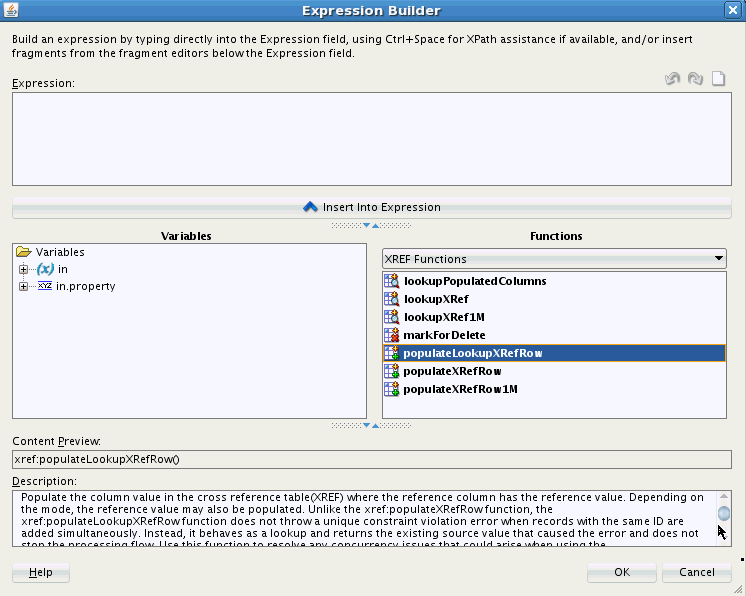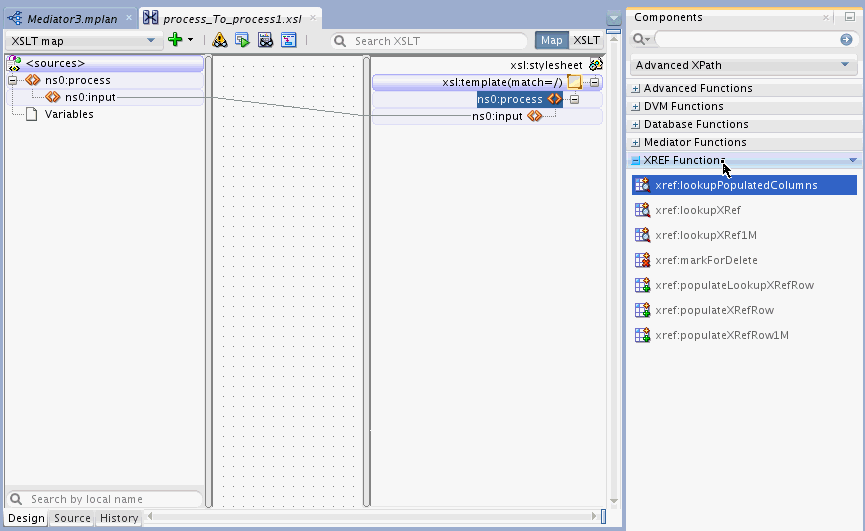Populating Cross Reference Tables
You can create a cross reference table in a SOA composite application in Oracle JDeveloper and then use it to look up column values at runtime. However, before using a cross reference to look up a particular value, you must populate it at runtime. You can use the cross reference XPath functions to populate the cross-reference tables. The XPath functions enable you to populate a cross reference column, perform lookups, and delete a column value. These XPath functions can be used in the Expression Builder dialog to create an expression or in the XSLT Mapper to create transformations. For example, you can use the xref:populateXRefRow function to populate a cross reference column with a single value and the xref:populateXRefRow1M function to populate a cross reference column with multiple values.
You can access the Expression Builder dialog through an assign activity, an XSL transformation, or the filtering functionality of a BPEL process service component or an Oracle Mediator service component. Figure 44-6 shows how you can select the cross reference functions in the Expression Builder dialog.
Figure 44-6 Expression Builder Dialog with Cross Reference Functions

Description of "Figure 44-6 Expression Builder Dialog with Cross Reference Functions"
The XSLT Mapper is displayed when you create an XSL file to transform data from one XML schema to another. Figure 44-7 shows how you can select the cross reference functions in the XSLT Mapper.
Figure 44-7 XSLT Mapper Dialog with Cross Reference Functions

Description of "Figure 44-7 XSLT Mapper Dialog with Cross Reference Functions"
A cross reference table must be populated at runtime before using it. By default, the data is stored in the XREF_DATA table under the SOA Infrastructure database schema. You can use the xref:populateXRefRow function to populate a cross reference column with a single value and the xref:populateXRefRow1M function to populate a cross reference column with multiple values.
Note:
You can also store the data in a different database schema by configuring a data source in the following way:
-
The JNDI name of the data source should be
jdbc/xref. -
The
ORACLE_HOME/rcu/integration/soainfra/sql/xref/createschema_xref_oracle.sqlfile should be loaded to create theXREF_DATAtable in this data source.